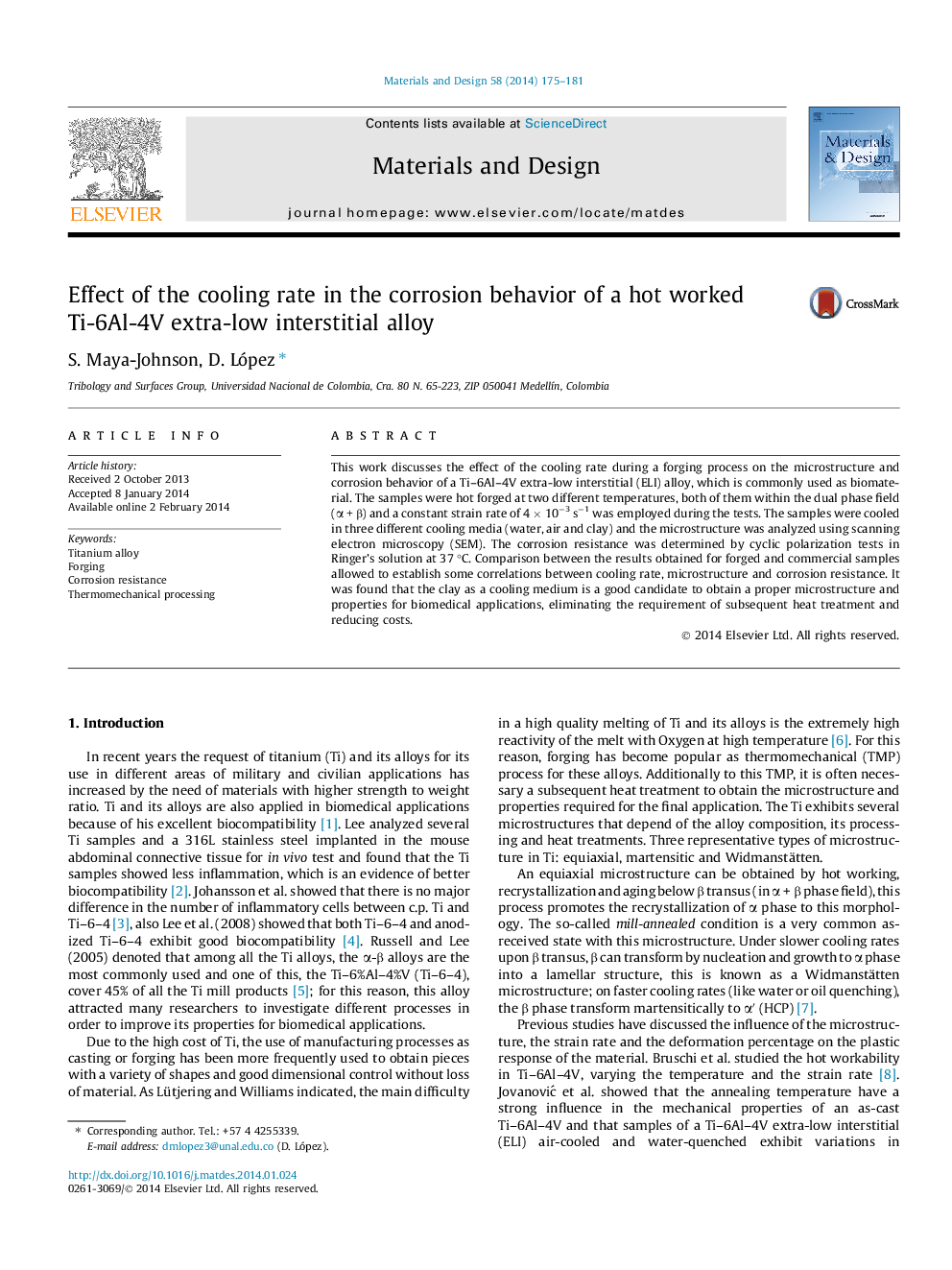| Article ID | Journal | Published Year | Pages | File Type |
|---|---|---|---|---|
| 829263 | Materials & Design (1980-2015) | 2014 | 7 Pages |
•Samples of a Ti alloy were cooled in different media after a hot forging process.•It is proposed that cooling samples in clay avoids the heat treatment after deformation.•The process described does not decrease the corrosion resistance of the material.
This work discusses the effect of the cooling rate during a forging process on the microstructure and corrosion behavior of a Ti–6Al–4V extra-low interstitial (ELI) alloy, which is commonly used as biomaterial. The samples were hot forged at two different temperatures, both of them within the dual phase field (α + β) and a constant strain rate of 4 × 10−3 s−1 was employed during the tests. The samples were cooled in three different cooling media (water, air and clay) and the microstructure was analyzed using scanning electron microscopy (SEM). The corrosion resistance was determined by cyclic polarization tests in Ringer’s solution at 37 °C. Comparison between the results obtained for forged and commercial samples allowed to establish some correlations between cooling rate, microstructure and corrosion resistance. It was found that the clay as a cooling medium is a good candidate to obtain a proper microstructure and properties for biomedical applications, eliminating the requirement of subsequent heat treatment and reducing costs.
